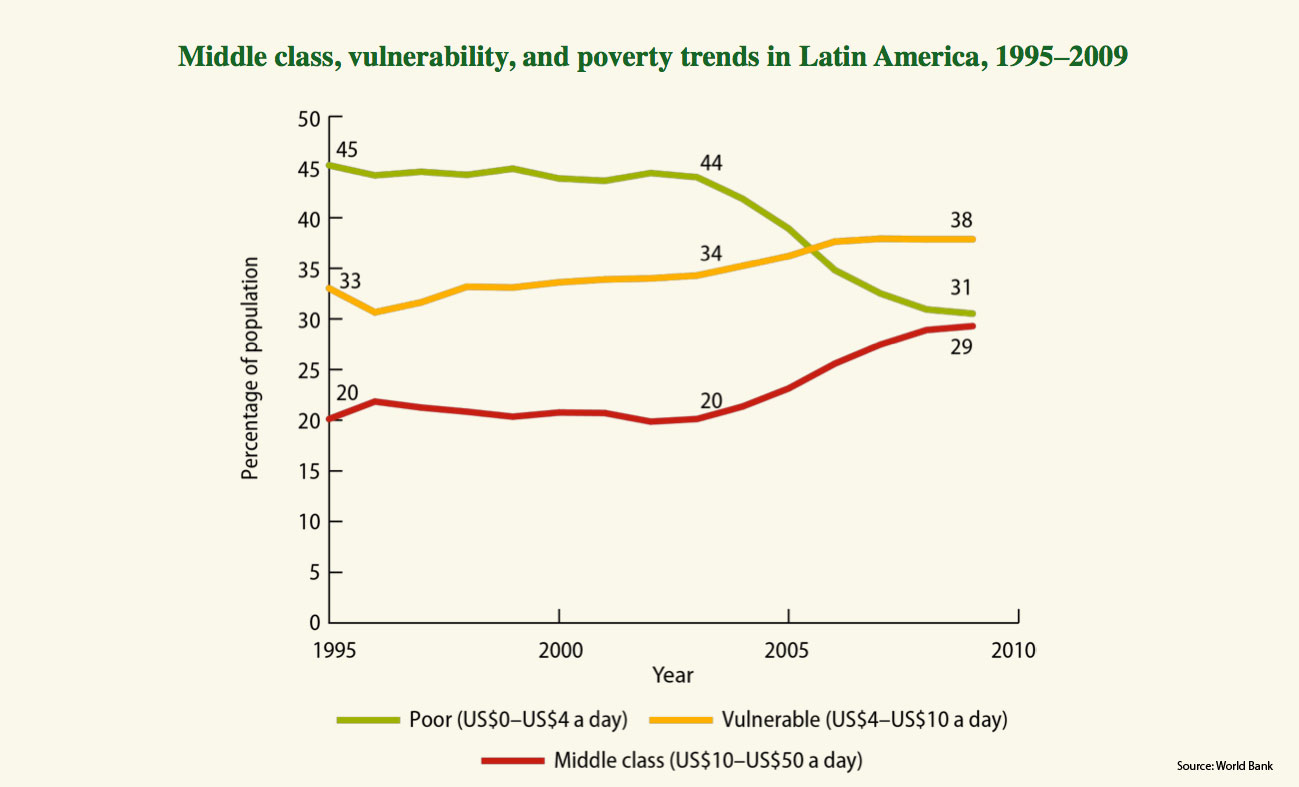Latin American Middle Class Grows by 50 Million
The middle class has grown by 50 percent in Latin America over the last decade.
Nov 14, 2012— -- The middle class in Latin America and the Caribbean grew by 50 percent in roughly the last decade, according to a recent report by the World Bank.
In 2003 the group represented about 103 million people. In 2009, the most recent count, it's an estimated 152 million. Experts hailed the 49 million-person increase as a successful result of economic policy by Latin American and Caribbean (LAC) governments, but also cautioned that much more remains to be done.
"The recent experience of Latin America and the Caribbean shows the world that policies balancing economic growth while still expanding opportunities for the most vulnerable can spread prosperity to millions of people," said World Bank President, Jim Yong Kim. "Governments […] still need to do much more – one third of the population is still in poverty."
For decades, little progress was made in the region to reduce poverty and grow the middle class, according to the report. But economic stability and growth in the region, coupled with more recent changes emphasizing the delivery of social programs, spurred this meteoric boost.
"It's a remarkable phenomenon," said Augusto de la Torre, chief economist for Latin America and the Caribbean at the World Bank. " [But] I think we in Latin America have to be very careful not to sing victory, yet, because this has been accompanied by very strong tail winds in the last ten years – very favorable economic conditions."
Researchers define the middle class within LAC as those who are not rich but are still economically secure – or have less than a 10 percent chance of slipping into poverty. Earning $10 to $50 a day, or at least $14,000 per year, would put a family of four into the middle class. A household making less than $4 a day is considered poor, while those earning from $4 to $10 are economically vulnerable.

Rates of poverty have fallen rapidly as more have transitioned into the economically vulnerable category and the middle class, according to the report. Today, the middle class and the poor account for roughly the same share of the population – 29 percent and 31 percent respectively – while the economically vulnerable now make up the majority (38 percent).
The World Bank called for a second round of reforms to continue addressing poverty and moving economically vulnerable populations into the middle class.
De la Torre noted that the favorable conditions that have spurred middle class growth could change – erasing recent progress. "We have to be particularly vigilant to introduce the policies that preserve what we have gained," he said.
World Bank researchers hammered on the need to disrupt the "vicious cycle" of low taxation and low quality of public services. The average tax rate in LAC is 17 percent – half that of OECD member countries.
Historically within the region, the upper and middle classes often opt out of public services. For example they may send their children to private school if they have the means to do so. World Bank researchers worry that the region may not benefit from the positives that come from a strong middle class – including the pressure to improve public services (like education and health care) because the middle class has a stake in those services.